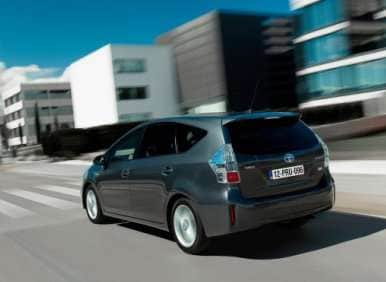Recent Articles
Popular Makes
Body Types
2013 Toyota Prius Plug-in Road Test & Review
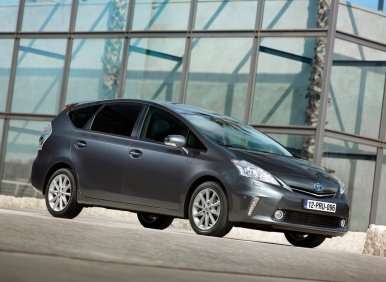
Given it was an all-new model for 2012, it should come as little surprise the 2013 Toyota Prius Plug-in arrives unchanged for the new model year.
The poster child for “green” motoring, Toyota’s Prius is easily the 800-pound gorilla in any collection of fuel-efficient vehicles. And while Chevrolet beat Toyota (now there’s a phrase you won’t read very often) to market with a plug-in hybrid (no matter what the marketing department says, Chevrolet’s Volt is a hybrid — OK?) any experienced gambler will tell you the odds-on favorite in the plug-in hybrid sales race is always going to be the Toyota Prius.
Not so much because the Plug-in Prius is such a better car than the Volt, but more so because Toyota’s hybrid has the momentum of more than 15 years of sales success behind it (not to mention a rabid fan base). Introduced in 1997, by 2010, two million units of Toyota’s Prius had been sold worldwide. The model passed the one million sales mark in the U.S. in April of 2011, and the third generation Prius — the car upon which the Plug-in Prius is based — sold a million units worldwide, in only two years.
Clearly a whole lot of people like the Toyota Prius.
And now, the Prius most of those people have been clamoring for is here.
2013 Toyota Prius Plug-in Road Test & Review: Models & Prices
Offered in two states of trim — Base and Advanced —standard features for the Base model Prius Plug-in include a unique set of 15-inch alloy wheels (differing from all other Prius models), LED Daytime Running Lights, Plug-in specific driver-feedback screens, heated front seats, Toyota’s Smart Key System on three doors with push-button start and remote illuminated entry.
To all of that, the Advanced trim package adds a Head-Up Display, LED headlamps, SofTex interior seat trim, and an eight-way power adjustable driver seat. The Prius Plug-in Advanced also features a JBL audio system mated with a hard-disc drive based navigation system. The Advanced Prius Plug-in also incorporates Toyota’s Dynamic Radar Cruise Control.
Pricing starts at $32,760 for the Base model and $40,285 for the Prius Plug-in Advanced.
And yes, those prices include Toyota’s $760 destination and handling charges.
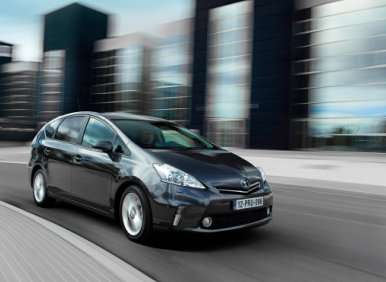
2013 Toyota Prius Plug-in Road Test & Review: Design
The Plug-in Prius, unless you look very closely, is pretty difficult to distinguish from the rest of the Prius family. Not that this is a bad thing — after all, the design is both iconic and maximizes cabin space. In fact, the wedge shape of the Prius virtually defines “hybrid” for the vast majority of the motoring public.
With that said, specific differences between the Prius Plug-in and the rest of the Prius models include the wheels, the charging port on the right rear fender, and a chrome trim strip with Plug-in badging along the lower edge of the car.
Just as on the standard Prius, the Plug-in’s interior design features easy to read and operate controls. The center console’s climate and audio switches are mounted in a “floating” console configured in an arc, which is angled to face driver. The digital instrument panel is housed in a separate “floating” layer.
Still, it’s easy to see how some people might consider the overall dash design a bit on the busy side, there’s a lot going on there.
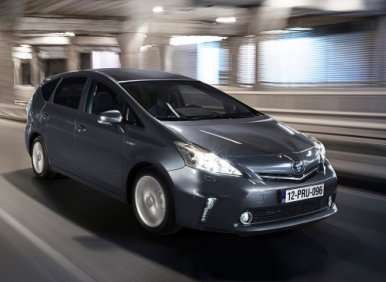
2013 Toyota Prius Plug-in Road Test & Review: Comfort & Cargo
Fuel economy concerns aside, one of the things Prius fans really appreciate is the versatility of the car’s hatchback body style. With seating for five, the Prius Plug-in boasts some 21.6 cubic feet of cargo volume — even while fully occupied with passengers.
Rear seat passengers benefit from plenty of legroom and while there’s also lots of room up front for taller drivers, for my six-foot one inch frame, the steering wheel seemed placed a bit too far away. Even when I fully deployed the telescoping column, the wheel didn't really extend quite far enough for me to drive the car in complete comfort. Now, it wasn’t like “OMG, this is terrible.” But rather than having me lean slightly forward while driving, the wheel could have been a bit more generous about reaching out to me as well.
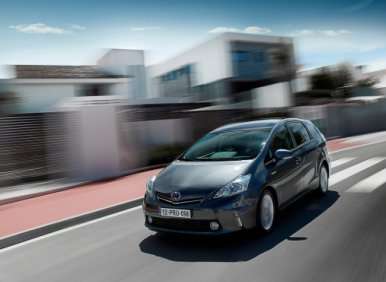
2013 Toyota Prius Plug-in Road Test & Review: Features & Controls
On the equipment side of the Prius Plug-in features equation, other highlights include automatic headlights, LED taillights, full power accessories, and the aforementioned tilt-and-telescoping steering wheel. A height-adjustable driver’s seat, automatic climate control, heated front seats, and a 60/40 folding rear seat are also bundled in.
It’s an upmarket Toyota, so state of the art electronic features such as Bluetooth telephony and audio streaming, a back-up video camera, navigation, and voice recognition are also included. The base model offers a six-speaker sound system with a touchscreen display fed by a head end containing a CD player, an auxiliary audio input jack, an iPod/USB audio interface, and both satellite and high definition radio.
Toyota's Entune smartphone and Web integration system is also standard Prius Plug-in equipment. The Entune multimedia system incorporates smartphone apps into the comfort and convenience capabilities of the car. With Entune, the Prius Plug-in can leverage the services of mobile applications such as Bing, OpenTable, and MovieTickets.com. Travel-related services, such as live weather, traffic, refueling locations and price information; in addition to stock market and sports news are all piped into the Prius Plug-in via Entune. Further, the system enables the accessibility of music options such as iHeartRadio and Pandora as well.
Readouts for Toyota’s Touch Tracer Display, which uses touch sensitive switches on the steering wheel for audio and information show up in the instrument panel. Touching the switches activates a duplicate image of themselves on the instrument panel, enabling the driver to operate them without having to look down at the steering wheel. The Touch Tracer Display calls up audio, temperature, and trip computer information.
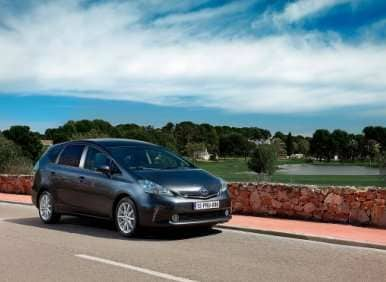
2013 Toyota Prius Plug-in Road Test & Review: Safety & Ratings
Standard safety features include front side airbags, a driver’s knee airbag, and full-length side curtain airbags. Stability and traction control, antilock disc brakes, and hill start assist are also part of the Prius Plug-in’s basic safety suite.
The Prius Plug-in Advanced model adds Toyota’s Safety Connect system, which provides access to a call center with a live operator for dispatching police and emergency vehicles. Safety Connect encompasses automatic collision notification and stolen vehicle locator features. These can track the location of the vehicle via GPS to help guide police and emergency personnel to the hybrid Toyota in untoward situations.
The National Highway Traffic Safety Administration (NHTSA) awarded the Prius Plug-in four out of five stars overall in crash testing. The car earned four stars for total frontal impact protection and five stars for total side-impact protection.
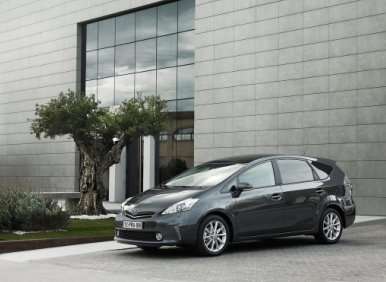
2013 Toyota Prius Plug-in Road Test & Review: Engine & Fuel Economy
The 2013 Toyota Prius Plug-in uses a 134-horsepower, 1.8-liter four-cylinder engine, combined with a pair of electric motor-generators. Propulsion is routed to the front wheels through a continuously variable transmission (CVT) specifically optimized for hybrid powertrains.
Unless you’ve been sequestered in a jury someplace for the past sixteen years, you probably know all hybrid automobiles use electric motors as well as gasoline engines for motivation. While most hybrids produce electricity from the operation of their gasoline engines as well as from recapturing energy generated during braking and coasting, the plug-in hybrid can also recharge its batteries using current from a household electrical outlet.
According to the EPA, the Prius Plug-in's gas engine returns some 51-mpg in the city and 49 mpg on the highway. It is estimated the car will deliver 50 mpg in combined operation. When the electric motor-generators are factored into the equation, the EPA estimates the Prius Plug-in will cover the equivalent of 95 miles per gallon in combined city and highway operation. Given the Prius Plug-in’s ability to travel approximately 15 miles on electricity alone, it is conceivable an individual with a commute of less than 15 miles (and a charging station at their place of employment) could drive back and forth to work everyday without using any gasoline at all.
Toyota made a few changes to the standard Prius formula to create the Prius Plug-in. The most significant change was a switch in battery technology. The company developed a compact, lightweight, high-output battery specifically for the Prius Plug-in Hybrid. Rather than the nickel metal hydride (NiMH) battery pack every other Prius has always employed, the Prius Plug-in uses an all-new 4.4 kWh lithium-ion battery pack.
The battery pack includes a charger with an internal cooling fan located underneath the battery array. Toyota ‘s engineers also optimized the hybrid system’s inverter for use with the new, higher-capacity battery pack. Additionally, the Plug-in hybrid’s cooling system uses a larger heat exchanger and a higher-capacity fan motor than the standard Prius models do.
The Prius Plug-in’s charging port is located behind a spring-loaded push-open door on the right-rear fender. Connecting the Toyota Plug-in to a standard 120V household outlet will recharge the fully depleted battery pack in about three hours. A 240V outlet (like the one an electric laundry dryer uses) will completely recharge the battery pack in about an hour and a half. To save its owner money and facilitate their convenience, the Prius Plug-in is equipped with a timer, which allows charging to take place during off-peak hours. It can be set for automatic operation for both start and end times so the owner can basically plug the car in and walk away from it, confident recharging will take place at a pre-designated time in their absence.
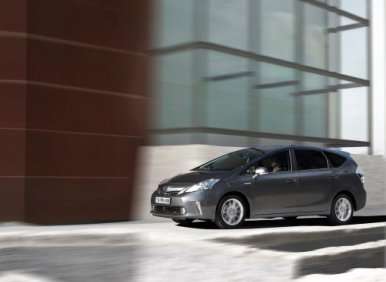
2013 Toyota Prius Plug-in Road Test & Review: Driving Impressions
While all of the engineering that went into developing the Toyota Prius Plug-in is more than enough to keep even the most fervent technophile thoroughly engaged, driving enthusiasts will be somewhat underwhelmed by the Prius Plug-in motoring experience.
Described succinctly, when it comes to driving, the Prius Plug-in is competent but not particularly thrilling. The electric steering system, while accurate, provides very little tactile feedback. Acceleration is leisurely; merging into freeway traffic is best done strategically and with careful planning.
On the other hand, braking distances are more than reasonable (though the feel of the brakes won’t leave driving enthusiasts swooning with delight) and winding mountain roads are competently negotiable in the Toyota. However, while driving said mountain road in your Prius, if you see a sports car coming up behind you, do everyone a favor —please use the first available turnout.
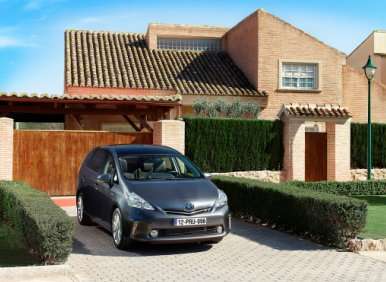
2013 Toyota Prius Plug-in Road Test & Review: Final Thoughts
Honestly though, if we’re truly going to give the Toyota a fair shake, it has to be said that really isn’t what the Prius Plug-in — or any Prius really — is all about.
The Prius Plug-in will absolutely thrill hypermilers, who can legitimately be labeled enthusiasts in their own right. Not so much for the way it drives, but for the way it allows you to keep an eye on how it goes. The car is configured to permit near endless monitoring and charting of its fuel usage, as well as its electricity usage and generation. This enables those so inclined to maximize, or said more properly, minimize their gasoline consumption, by observing the information presented by the instrumentation and driving the car accordingly.
This, in and of itself, can also be considered a sport.
Often, when driving a hybrid, I will amuse myself by seeing just how long and how fast I can drive the car in purely electric mode. So yes, you can have fun driving the Prius Plug-in; as long as screaming acceleration, clipping apexes, late braking, and viciously tenacious cornering are not your only criteria when it comes to driving fun.
With that said, given the Prius’ now long standing reputation for reliability, fuel efficiency, and resale value, if the visceral aspects of driving pleasure aren’t high up on your list of priorities, you could do a lot worse than adding a Toyota Prius Plug-in to your roster of transportation options.
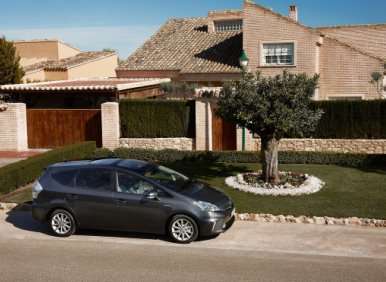
2013 Toyota Prius Plug-in Road Test & Review: Pros & Cons
• An outstanding complement of content for the money
• Even better fuel efficiency than a standard Prius
• Spacious interior for passengers and great cargo capacity
• Toyota reliability and resale value are standard equipment
• 15 miles of electric range really ain’t that significant with the Tesla out there.
• The interior components look a bit on the low-rent side for the price
• Taller drivers will drive with somewhat outstretched arms
• Instrument panel’s design a tad busy
